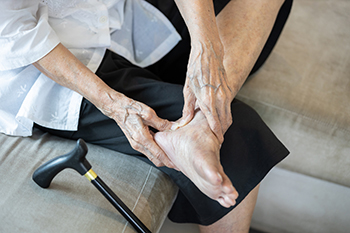
The possibility of breaking a toe can increase if a heavy object drops on it. People can also get a broken toe if it is stubbed into a piece of furniture, and this generally causes severe pain and discomfort. Some people feel a dull pain and throbbing in their toe, which may indicate a stress fracture has occurred. Common symptoms of a broken toe include immediate swelling, bruising, and difficulty moving the toe. Severe fractures may cause the bone to snap and protrude through the skin, and surgery may be necessary to ensure a proper healing. Mildly broken toes can heal by using the buddy taping method. This is done by taping the affected toe to the toe next to it, which is generally successful in providing the necessary stability as it heals. An X-ray is typically done that can provide an accurate diagnosis, and this can determine what type of treatment is needed. If you have broken your toe, please confer with a podiatrist as quickly as possible who can help you with correct relief options.
Broken toes may cause a lot of pain and should be treated as soon as possible. If you have any concerns about your feet, contact Alex Kim, DPM from AVID Foot & Ankle Center. Our doctor will treat your foot and ankle needs.
What Is a Broken Toe?
A broken toe occurs when one or more of the toe bones of the foot are broken after an injury. Injuries such as stubbing your toe or dropping a heavy object on it may cause a toe fracture.
Symptoms of a Broken Toe
- Swelling
- Pain (with/without wearing shoes)
- Stiffness
- Nail Injury
Although the injured toe should be monitored daily, it is especially important to have a podiatrist look at your toe if you have severe symptoms. Some of these symptoms include worsening or new pain that is not relieved with medication, sores, redness, or open wounds near the toe.
If you have any questions, please feel free to contact our office located in Little Elm, TX . We offer the newest diagnostic and treatment technologies for all your foot care needs.




